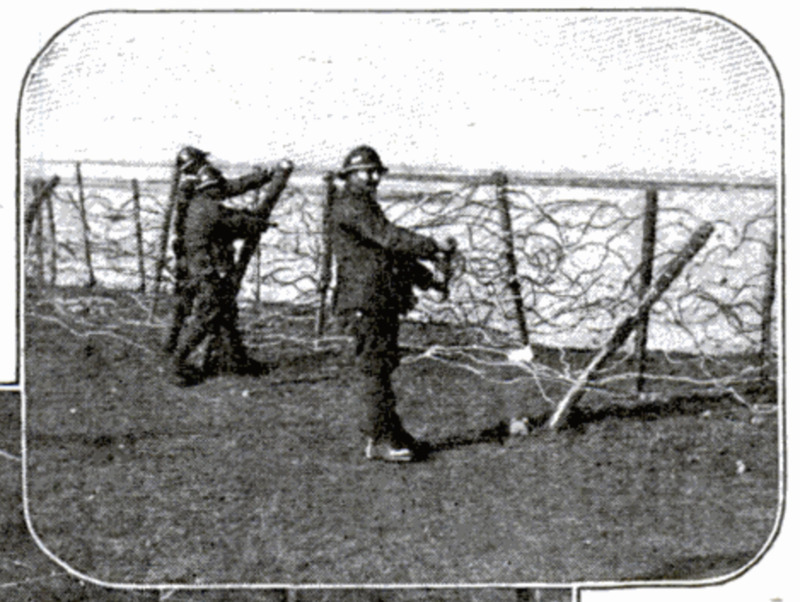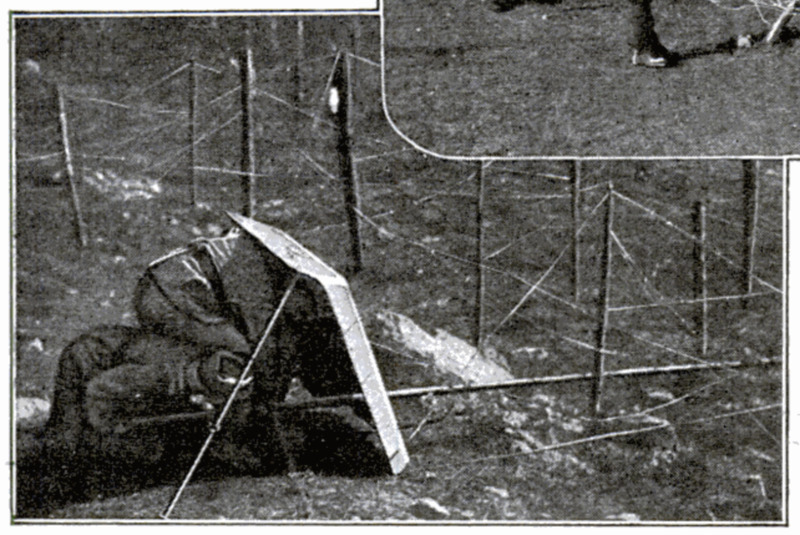Getting Rid of the Barbed Wire Entanglement
Item
-
Title (Dublin Core)
-
Getting Rid of the Barbed Wire Entanglement
-
Article Title and/or Image Caption (Dublin Core)
-
Getting Rid of the Barbed Wire Entanglement
-
extracted text (Extract Text)
-
BARBED wire entanglements were
first used in warfare by the Boers
in their brief struggle with Great Britain.
It was recognized at once by all the
military leaders of the world that a new
and very formidable method of checking
storming troops had been devised by
South African farmers who knew nothing
at all of military strategy. By the time
the Russian-Japanese War broke out
elaborate methods of installing barbed
wire entanglements had been evolved.
It became apparent that wire-cutters
would become an indispensable part of
an infantryman’s equipment. But it
was also recognized that the cutting of
barbed wire, in daylight at least, was al-
most suicidal. While artillery fire was
the most effective method of destroying
the entanglement, all the European ar-
mies have experimented with special
entanglement destroyers. In England,
France and Germany, these took the form
of long poles at the end of which explosive
charges were carried. England probably
made the most extensive experiments
of this kind, although the Russians
proved themselves the more ingenious.
In one of the accompanying pictures
an infantryman is shown advancing
under the protection of a shield with
one of these poles. If he gets to the en-
tanglement alive (the steel of his shield is
hardly thick enough to resist a machine-
gun bullet) he will pull a kind of trigger
or latch and explode the charge at the
outer end of the pole in his hand. The
destructive effect is far greater than
would be possible if shears alone were
used. As wires are often charged with
electricity the long-pole wire-destroyer
offers its operator some degree of safety.
-
Language (Dublin Core)
-
eng
-
Date Issued (Dublin Core)
-
1918-08
-
pages (Bibliographic Ontology)
-
239
-
Rights (Dublin Core)
-
Public Domain (Google digitized)
-
Archived by (Dublin Core)
-
Filippo Valle
-
Alberto Bordignon (Supervisor)
 Popular Science Monthly, v. 93, n. 2, 1918
Popular Science Monthly, v. 93, n. 2, 1918





